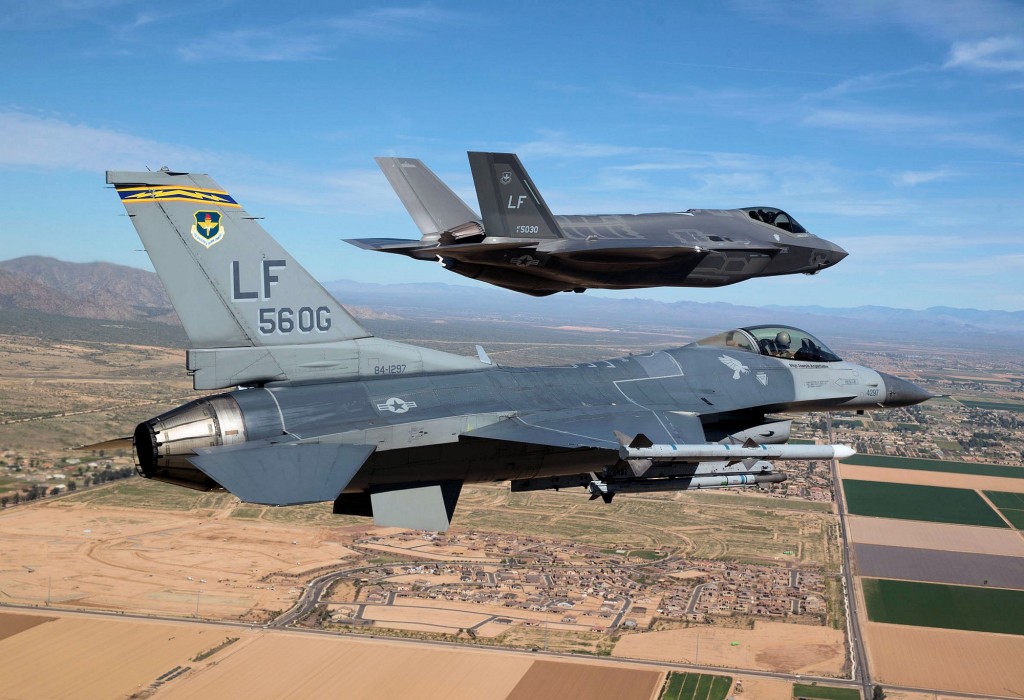F-35: Trillion Dollar War Plane May Still Not Be Ready For Combat

F-35 UNA CIOFECA SBOLOGNATA IN TUTTO IL MONDO
While Congress debates cutting Social Security, the most expensive weapons program in history — with an estimated lifetime cost of $1.5 trillion — is making questionable progress.
The US Marine Corps recently announced that, after 14 years of development, the F-35 is ready to be deployed and issued a declaration of initial operating capability (IOC). The IOC means that, in theory, the F-35 is fully operational and ready for combat use.
But while the Marines now officially can use the F-35 in combat, experts continue to question whether they should. The F-35 still has a host of reported problems that could endanger pilots and other US service members in a combat zone.
Though the IOC for the F-35b comes four years late, the plane will still not have a functional Gatling gun to protect ground troops until 2019. The Marines themselves have admitted that the plane’s sensor, communication, and night vision systems are also not up to the standards they set.
A report [PDF] from the Department of Defense’s Director for Operational Test and Evaluation (DOT&E) paints a gloomy picture of the F-35’s current state of readiness. A review from the Project on Government Oversight concluded that the report showed “the old problems are not going away, new issues are arising, and some problems may be getting worse.”
Recent test flights of the F-35 demonstrate the fighter is going to also have problems squaring off with other fighters in combat. In simulated dogfights the F-35 was continually bested by the older F-16 fighter and failed to maneuver effectively.
One thing the Pentagon did get right was political engineering. Parts for the F-35 are being manufactured in over 40 states with the US assembly area located in Forth Worth, Texas. If the F-35 program were to be killed, potential voters would lose jobs throughout the country — a clear incentive for Congress to keep the program going no matter the failures.
TRASCRIZIONE ITALIANO
Mentre i dibattiti del Congresso riducono la sicurezza sociale, il programma di armamenti più costoso della storia – con un costo stimato in vita di $ 1,5 trilioni – sta facendo progressi discutibili.
Il US Marine Corps ha recentemente annunciato che, dopo 14 anni di sviluppo, l’F-35 è pronto per essere schierato e ha rilasciato una dichiarazione di capacità operativa iniziale (IOC). Il CIO significa che, in teoria, l’F-35 è pienamente operativo e pronto per l’uso in combattimento.
Ma mentre i Marines ora ufficialmente possono usare l’F-35 in combattimento, gli esperti continuano a chiedersi se dovrebbero. L’F-35 ha ancora una serie di problemi segnalati che potrebbero mettere in pericolo piloti e altri membri dei servizi statunitensi in una zona di combattimento.
Anche se il CIO dell’F-35b arriva con quattro anni di ritardo, l’aereo non avrà ancora una pistola Gatling funzionale per proteggere le truppe di terra fino al 2019. Gli stessi Marines hanno ammesso che anche i sensori del piano, i sistemi di comunicazione e di visione notturna non sono all’altezza agli standard che hanno impostato.
Un rapporto [PDF] del Direttore per la valutazione e la valutazione operativa del Dipartimento della Difesa (DOT & E) dipinge un quadro cupo sull’attuale stato di preparazione dell’F-35. Una revisione del Progetto sulla supervisione del governo ha concluso che il rapporto mostrava “i vecchi problemi non stanno scomparendo, stanno sorgendo nuovi problemi e alcuni problemi potrebbero peggiorare”.
I recenti voli di prova dell’F-35 dimostrano che il combattente avrà anche problemi di quadratura con altri combattenti in combattimento. Nei combattimenti aerei simulati, l’F-35 è stato continuamente migliorato dal vecchio combattente F-16 e non è riuscito a manovrare efficacemente.
Una cosa che il Pentagono ha fatto bene è stata l’ingegneria politica. Parti per l’F-35 vengono prodotte in oltre 40 stati con l’area di assemblaggio degli Stati Uniti situata a Forth Worth, in Texas. Se il programma F-35 dovesse essere ucciso, i potenziali elettori avrebbero perso posti di lavoro in tutto il paese – un chiaro incentivo per il Congresso a mantenere il programma in corso, a prescindere dai fallimenti.

